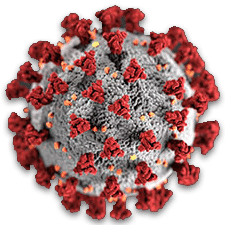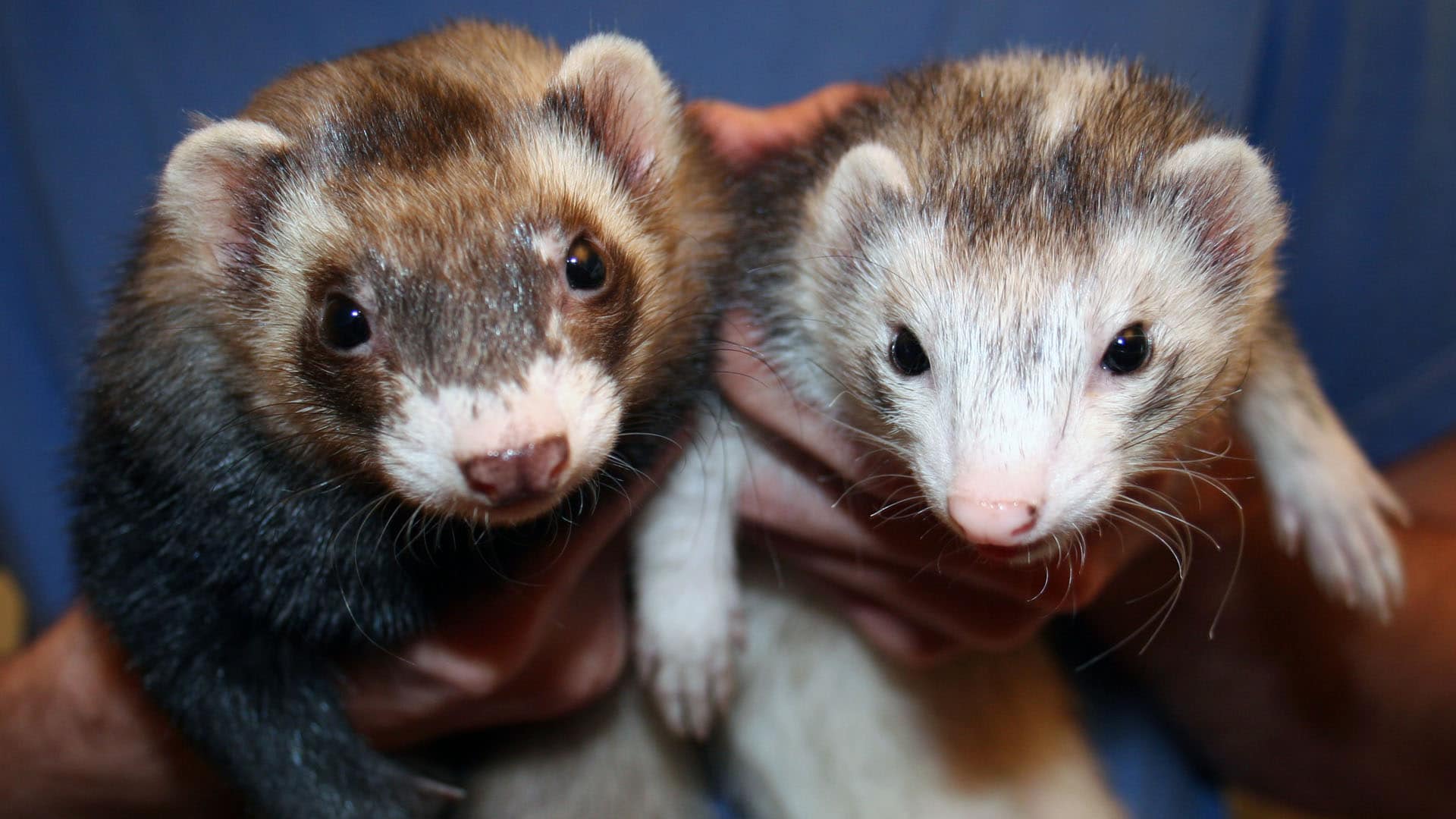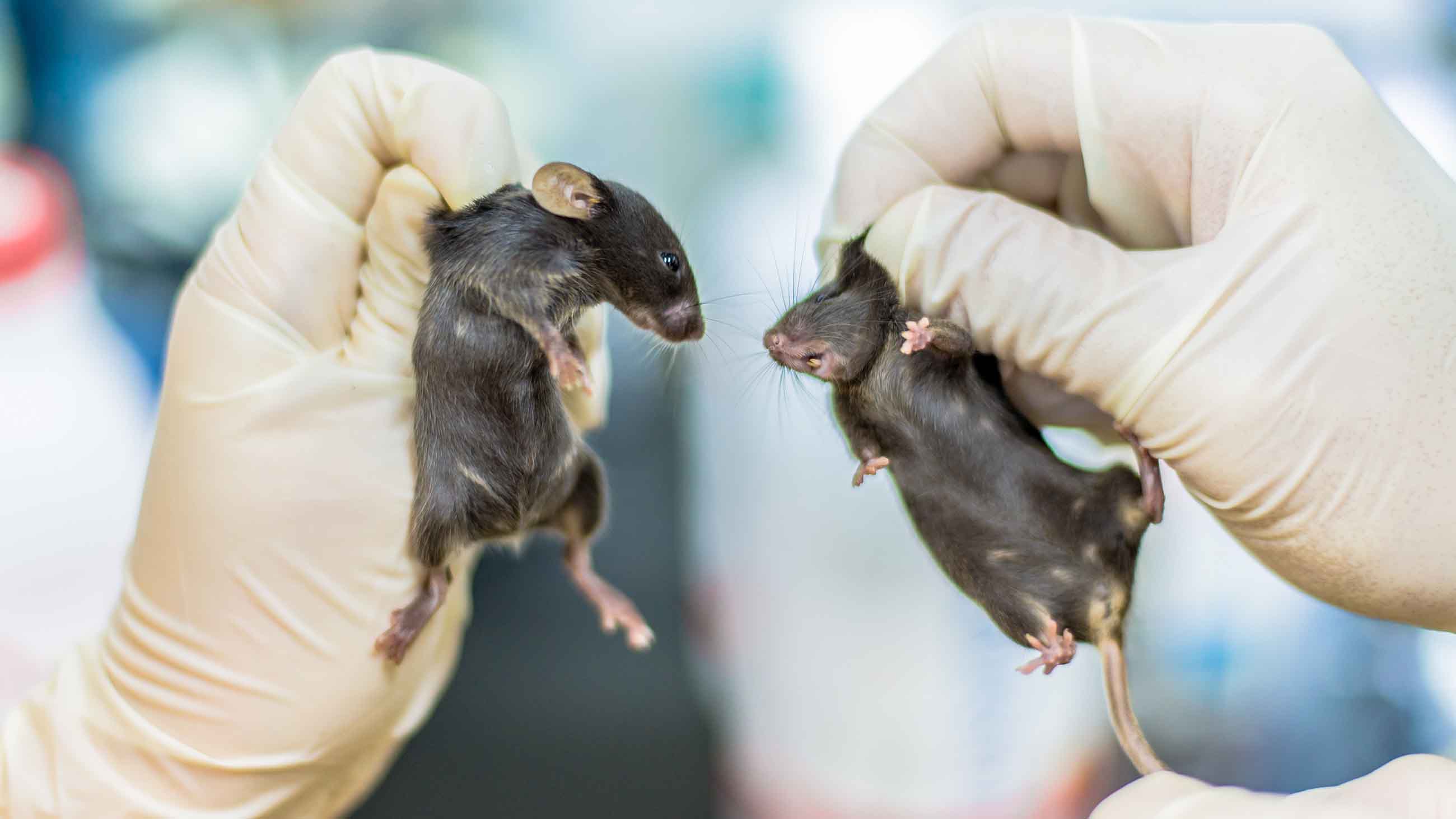How Ferrets Are Helping Researchers Battle Covid-19
They are adorable animals with little furry faces, and they’re playful and cuddly. But ferrets can catch and spread disease to humans, which is one reason many jurisdictions in the U.S. have banned them as pets.
In an infectious disease lab, however, that same viral vulnerability can make the common ferret an asset — perhaps now more than ever. In the worldwide race to develop treatments and vaccines for Covid-19, researchers need animals in which to observe the illness and challenge it with interventions. And it turns out that ferrets are vulnerable to the same respiratory infections that impact humans — including SARS-CoV-2, the virus that causes Covid-19. A study published earlier this month concluded that ferrets can carry and pass on the disease, and get sick with it as well, developing fevers and losing their appetites.
“They are a great animal model for human respiratory viruses,” said Alyson Kelvin, assistant professor in the division of infectious diseases in the department of pediatrics at Dalhousie University in Halifax, Nova Scotia.
This now has ferrets at the center of lab work around the globe. The animals are being used, for example, in two pre-clinical trials run by the Commonwealth Scientific and Industrial Research Organization (CSIRO) in Australia, the group that first identified ferrets as able to contract and be sickened by the novel coronavirus back in February. A $2.4 million project to develop ferrets as a model for studying Ebola, funded by the Food and Drug Administration and outsourced to Public Health England, has also been recently updated to look at ferrets and this novel coronavirus, for an additional $250,000.
Of course, some researchers are testing potential vaccines directly in humans, though that’s not the norm. “You need to have an animal model to test your hypothesis,” Kelvin said.
That obligation often goes to mice — the most familiar and widely used animal in research — and they are fundamental to coronavirus research, too, though they must first be genetically modified to be susceptible to Covid-19. (Research has also shown that cats can be susceptible to this novel coronavirus, and other studies have identified monkeys and hamsters as potentially useful models, too.)
For all the utility of mice, however, ferrets also have a long and often overlooked history as a research animal, and it’s little wonder that the creatures are now being drafted to help combat SARS-CoV-2. Volker Gerdts, director and CEO of the Vaccine and Infectious Disease Organization — International Vaccine Center (VIDO-InterVac) lab at the University of Saskatchewan, noted that as soon as the first genetic sequence for the virus was released back in January, it looked like ferrets would serve as an apt model. “The receptor that is used for the virus to enter the cells in ferrets,” Gerdts said, it is “closely related to humans.”
Working alongside Kelvin and others, Gerdts and his team have some 260 ferrets in the Saskatchewan lab, where they are being used to test two potential vaccines and to track levels of viral shedding, among other studies. Kelvin is heading up a study to understand why some ferrets — and by extrapolation, some people — get severely ill with Covid-19, while for others it remains relatively mild, or even asymptomatic. She also expects to look at the virus’ impact on ferrets of different ages soon. “We are doing a lot of work with them,” says Gerdts.
Ferrets have been on the radar as an animal model for nearly a hundred years, when researchers first discovered that they can get the flu, and pass it on to other ferrets. A study published in the July 8, 1933 edition of The Lancet followed up on that year’s influenza epidemic, giving the illness on to two ferrets using “throat washings” from people. They observed that the animals got sick on the third day and could pass it on to other ferrets by direct contact or nasal washings given from a sick animal to an uninfected one. “The ferret disease is characterized by a two-day incubation period, a diphasic temperature response, symptoms of nasal catarrh [discharge], and variable systemic disturbances,” study authors wrote. The ferrets developed temperatures, seemed lethargic, lost their appetites, and wheezed. After getting the flu, they showed immunity to getting the same strain again.
Thus, an animal model was born. Ferrets were used in influenza studies throughout the following several decades. In particular, they were used during the SARS outbreak, starting in 2002, to hunt for treatments and a vaccine. And in recent years they’ve been used to continue to study influenza, particularly H5N1 and H1N1, but also Ebola.
Ferrets are also used to study cystic fibrosis and lung cancer, because their respiratory tracts resemble those of humans, and as an animal model for heart disease and spinal cord injuries. They serve as a good model for understand drug validation and toxicity as well. Ferrets share many neurological similarities with humans, so they’re used to study brain conditions, including strokes and epilepsy. In fact, researchers have created transgenic ferrets, which means they’ve altered some of their genes, to study neurological conditions.
Respiratory illnesses in ferrets resemble those in humans because they have a similarly proportioned respiratory tract, with relatively large lungs compared to the rest of their body. (Mice, for instance, don’t: They have tiny lungs in a short torso.) Kelvin says that like humans, they have five lung lobes and branched-out airways in their lungs, and a comparable distribution of receptors that viruses bind to in their upper and lower respiratory tracts. They cough and sneeze and pass on their respiratory illnesses to nearby ferrets, mimicking human modes of transmission.
Importantly, their immune systems have similarities to ours, and they offer a good model for studying vaccines. Kelvin was a co-author on a 2013 study, for instance, that detailed how ferrets become infected with influenza. Research conducted by a graduate student under Bianca Mothé, a professor of biological sciences at California State University San Marcos, has looked at ferrets’ major histocompatibility complex (MHC) genes, which help the immune system recognize foreign invaders, and found they have a predictable response to respiratory pathogens. (The research has not yet been published.)
Gerdts says ferrets are cheaper and easier to work with than nonhuman primates, and researchers can test their full arsenal of potential treatments on them. “They’re the only model that allow you to stream many different candidates, whether it’s antivirals, therapeutics, or vaccines.” Because they live to be as old as eight in a lab setting, meanwhile, Kelvin has been able to develop age models for influenza and ferrets, to understand how it affects babies up to seniors, and expects to transfer this approach to SARS-CoV-2.
Like every animal model, ferrets have limitations. Thomas Geisbert, a professor of microbiology and immunology at the University of Texas Medical Branch at Galveston, who’s worked with ferrets to study illnesses such as the Ebola virus, says, “They can be difficult to work with because you don’t have as many reagents as you do for mice or monkeys.” Reagents are lab substances that help scientists detect biomarkers.
Kelvin often makes her own reagents. That’s time-consuming, as are other tasks related to working with ferrets: They’re bigger than mice and hamsters, so it’s more expensive to buy and care for them. Mothé says keeping ferrets healthy in an infectious disease lab poses a challenge. “These animals tend to be social and want to burrow,” she said. “Yet, for these studies, they need to be isolated and not close to each other to not infect each other.” A study published in ILAR Journal states it plainly: “Ferrets should be housed in groups or in pairs, and solitary housing should be avoided.”
 |
Thoughts or questions on Covid-19? |
Gerdts says his lab may look at working with cats soon — they use them for other illnesses. A Clinical Infectious Disease study from late March highlights the value of hamsters for researching SARS-CoV-2. They become unwell and it affects their airways. Geisbert suspects using hamsters in large numbers could help, for instance, to quickly identify the most effective antibodies derived from the blood plasma of people who have recovered from Covid-19. “You could screen through hundreds of these things and figure out which are the best ones before you start putting them in monkeys,” he says.
Geisbert calls nonhuman primates such as monkeys the “gold standard” for this kind of research. But Gerdts and Kelvin also think ferrets might offer researchers enough information to be able to skip monkey studies and move directly to human testing by the fall.
“I don’t want to say they’re perfect,” Kelvin said of ferrets. “But they’re the best model that we have.”












Comments are automatically closed one year after article publication. Archived comments are below.
Just to set the record straight,ferrets were banned in California by the DNR because they posed a threat to native ground nesting birds and developing feral groups,which is highly unlikely as ferrets bought in pet stores are spade and neutered by MF before they are sent out and having lived in captivity all of their lives,they have no survival instincts and would succumb to dehydration in less than a week,plus if they did happen to kill something they wouldn’t recognize it as food,only the toy that was moving but isn’t anymore.
As fast as “being overlooked” as research animals.
Marshall Farms,the largest ferret breeders in the world does most of it’s business with scientific laboratories for the express purpose of using them to investigate contagions that can affect humans,as well as testing inhalation equipment for neonatal infants.
But what do I know,I’ve only had ferrets for about 30 years.
I cannot absolutely cannot stand any labs using our precious little ferrets to experiment on, it’s cruel heartless and just plain evil. STOP TESTING ON FERRETS and test on humans or better yet test on yourselves.
Hey I got a great idea here. I say why not write an article about how to adopt one of these fuzzy “heroes” from the researching places they are in once they are done with their “service” of being tested on??
I’ve been trying for months to find a lead to get some kind of information on where I can go to contact a lab so that I can ask if they would or could. Because there is something that came out that makes it so Labs CAN adopt out animals that were used in testing . I can’t think of the name of it right now but when I do I’ll post a reply under my comment. seriously though I know you’re just the messenger but we have a serious problem going on, and with your gift of writing and getting people’s attention, you might be able to help change something like this. What are your thoughts and views on ferrets for example? I would really like to know. Have you ever touched one held one at all? Had a friend that had one? Well if not let me tell you something and all of my years of experience with animals I have never felt this way about any other animal. Please consider writing about laboratories adopting the animals out after the testing is over. And provide links or contact information to the people that are in position to allow the adoptions? Thank you if you took the time to read this .
I have a good idea. Test on Humans ‘ not innocent Ferrets it’s cruel and inhumane.!!!
IAM NOT OK WITH THIS!! Test on a god damn human that give their consent to do so.
This should nt be allowed I’m fuming I have two ferrets it’s cruel
Ferrets are not banned anywhere because they can contract similar diseases as people, they are banned a few places because of the concern that they could become invasive species and also there have been a few “attacks ” and injuries caused to very young children. The article you linked makes no mention of them being banned due to being possible disease vectors. They can contract rabies, but so can dogs and cats and there are effective vaccines for that. The statement you made is just wrong, the article you cited is pretty much click bait and it doesn’t even say that either. Not a good start to what I was hoping would be a credible science based article.
Perhaps the ferrets’ attributes could be put to use exterminating the plague of web comments sowing unnecessary discord and tribalism in this country.
As someone who usually enjoys the high quality content of Undark, the insensitivity and tone-deafness regarding cruelty to animals in this article is truly disturbing.
My first reaction, you’re sick, ferrets are adorable and friendly, don’t get me wrong, we need a cure or something to bring relief for those who contract covid-19, but you say you’re experimenting with ferrets, and you describe every gorey detail -& I’m sorry, you bring out the animal rights activist in me! I think you say said cats too? And altered mice… I can’t stand it, how would you like to be forced to have your nose washed with a viral liquid, that would be unfathomable, wouldn’t it, in fact, since your human, if someone washed your nose out with a deadly virus, it would be attempted murder. In this situation, you’re the murderer.
I’m not sick, I don’t know anyone who is, but I’ve been at home isolating and was when they told us to, and my hands have never been cleaner. I’m somewhat agoraphobic, so maybe it’s easier for me, but just reading about what you do to animals is so disturbing I don’t know how to get past it. Try a rewrite, and sugar coat it if you have to, I’d appreciate it. I wish I could find a cure too, but the best I can do is what I’m already doing.
So if people are asymptomatic, will the US ban them from certain jurisdictions, uncall us human, and turn us into lab rats? Or should I say “Lab humans?”
I agree with one of the other commenters, the complete lack of empathy towards these animals is disgusting. I am a ferret owner and i can read between the lines and tell they are keeping these ferrets isolated in small cages which is torture in itself. Why would they use ferrets when we have so much human vermin available. There are millions of democrats, child molesters, murderers, professional welfare recipients and other assorted filth who could be experimented on and exterminated. It’s truly gross.
Stop experimenting on ferrets and other animals find another way to do your experiments that’s animal cruelty.
Facts
You shoud use Child molesters and
People who can tell you what the
Drug feel like Or use it on the Drs
That is giving the Shots
FURIOUS! Testing on ferrets is barbaric, their biology is totally different from ours and thats what pedofiles and murderers should be used for. Also that is NOT why ferrets are banned in some states, ferrets bred for the pet trade do NOT survive in the wild unless they are not neutered and descented.
Marshall is the one thats donates them for science..how could u sit and torture and living being god will have no mercy on yoj
The absolute lack of empathy shown in this article towards the unfortunate animals being tortured in labs in this article is utterly disgusting and reprehensible. Animals being described as “models” for research i.e. being infected with diseases and being genetically modified to have horrible neurological afflictions is pure evil and a bastardization of nature. It is our cold disdain for living beings and the use of them as slaves that likely got us into this mess in the wet markets in the first place. The author makes it sound as though the animals are willing recruits in the battle to fight the virus. As a person who as always spoken up for animals suffering in labs I can guarantee you this is NOT the case. I am offended and deeply disturbed by this article which only shows by its utter lack of sympathy or respect for animals just how far from the path of a healthy relationship with nature we have strayed.
This so WRONG! AND SAD! AND NEEDS TO STOP! use the real humans on death row for experiments. STOP using defenseless animals. Stop the torture! And abuse. There is ZERO need for the use of an animal.
I agree so much with this why use animals that can’t defend themselves and if they do they’ll probably get rid of the animal
These so called researchers better hope they never meet me face to face! That is a fact and i make no secret who i am! I definitely want them all to know who i am! Twisted bastards
For the record ferrets are legal in the united states. Very few cities have them banned. Prior ferret owner